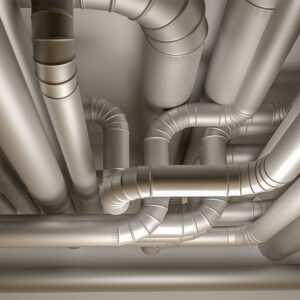 These challenging times have made us rethink how our HVAC systems operate. A lot of precautions and procedures have been taken for businesses to continue to operate. Today, more and more businesses are reopening as bans are being lifted.
These challenging times have made us rethink how our HVAC systems operate. A lot of precautions and procedures have been taken for businesses to continue to operate. Today, more and more businesses are reopening as bans are being lifted.
With businesses reopening, there comes a lot of recommendations on how to make sure your building is safe to begin welcoming people into again. The ASHRAE Epidemic Task Force has put together a guide of recommendations on how to safely reopen a building. We take a look at a couple of those recommendations.
Ensure Your Buildings HVAC Systems are Safe
Before your building is reoccupied routine maintenance on the HVAC systems should be performed. Once routine maintenance has been completed, it’s recommended that tests should be conducted to ensure the HVAC systems are in fact running safely, especially if they had been shut down for a period of time. M. Dennis Knight, P.E., FASHRAE, principal/engineer at Whole Building Systems in Charleston, South Carolina, and member of ASHRAE’s Epidemic Task Force, suggests that building owners consider recommissioning their systems. A commissioning provider will ensure the systems are operating as stated in the systems manual. They will prepare a commissioning plan and oversee all functional performance testing. Once the systems have passed the testing, you can be confident your building is safe for reopening.
Air Filters Make a Difference
The average droplet size expelled when someone coughs or sneezes ranges from 10 µm to 100 µm. This size of droplet doesn’t stay airborne long which means your HVAC system may never catch it. Droplets under 10 µm, however, can stay airborne up to three hours. These are the droplets you need to be concerned about as these are the size of COVID-19 particles.
To tackle these particles you need to make sure you have the right filter. A MERV-13 filter is the minimum filter rating that is recommended for HVAC systems. It removes at least 90% of particles in the 3-10 µm range, 85% in the 1-3 µm range and 50% in the 0.3-1 µm range. Before installing MERV-13 or higher rated filters, be sure that your HVAC system can handle it.
Use Outdoor Air as Much as Possible
Now is the time to rethink how we air condition our homes. As the weather gets hotter, more people will begin turning on their air conditioning units. Central air conditioners can be a problem as they transmit indoor air from room to room. It’s recommended that people open windows to climate control their office spaces instead of using the central air conditioner.
In your home it’s best to have your A/C unit taking in only outdoor air and expelling the indoor air out of the home using good quality vents. This will lessen the potential of recirculating COVID-19 particles.
Better Safe than Sorry
These are rapidly changing times we are in and we are all responsible for taking as many safety measures as possible. Ensuring your HVAC system is running safely and effectively plays a significant role in combating COVID-19.



